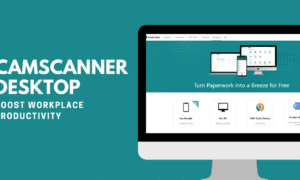You’ve seen it before. A startup launches with a flashy website, tons of buzz on social media, maybe even a press feature or two. For a few months, it’s all noise and momentum. And then—nothing. It fades, like it never existed. That’s because hype wears off fast. What doesn’t fade is planning. Businesses that last don’t just ride trends. They build on purpose. And it all starts with knowing how to evaluate market potential before making the first move.
Why Sustainable Businesses Don’t Rush
Going slow feels wrong when you’re trying to launch something big. Everyone’s rushing. There’s pressure to be “first” or “fast.” But here’s what most don’t tell you: rushing can kill your business before it even finds its footing.
When you skip the boring stuff—strategy, research, planning—you’re just guessing. And guessing gets expensive. Maybe you’ll spend months building a product nobody needs. Maybe you’ll run into a saturated market you didn’t expect. Or maybe, you’ll get some quick wins… and burn out when the hype fades.
The companies that survive? They’re not always the loudest. They’re the ones who took the time to build a strong foundation before racing ahead.
Knowing Your Market Before You Build
You’ve got an idea. Great. Now what?
Before you even sketch your logo, you need to ask some tough questions. Who exactly is going to buy this? Why? Are there already better solutions out there? What do people hate about those solutions—and can you do it differently?
These questions might slow you down at first, but they’ll save you from bigger problems later. The goal is to understand your market from the inside out. What do people actually want? What are they willing to pay for? What frustrates them?
The truth is, many entrepreneurs build for themselves. But smart founders build for their customers. That starts with doing the homework. Interviews. Surveys. Reading the forums. Studying competitors. Watching trends. Digging into behavior.
You don’t have to be perfect. But you do have to be curious.
Planning for Long-Term Relevance
So, you’ve done the research. You understand your market. Now it’s time to plan for the long haul.
The best businesses don’t just think about launch day. They think about month 12. Year 3. Year 10. They leave room for change, but they also create a path forward. That might look like a lean, flexible business model. Or building software that can adapt to new use cases. Or setting up workflows that don’t break the second you grow.
Long-term thinking is the opposite of “just ship it and hope.” It’s being ready for what happens after the first hundred users. Or after the next competitor shows up. It’s about solving today’s problem while staying open to tomorrow’s.
Your first version doesn’t have to be perfect. But it should fit into a bigger vision.
Culture, Focus, and Staying the Course
Here’s something not talked about enough: internal chaos ruins more startups than the market ever does.
Planning isn’t just about your product. It’s about your team. Your culture. Your mission. When you hire, are you hiring for right now, or are you building a team that can grow with the business? Are your values clear? Can your team weather a slow season? Will they stick around when the spotlight fades?
Startups that build without focus often find themselves lost when the initial excitement subsides. That’s when the cracks start showing—miscommunication, weak direction, no shared goals. You don’t fix that with a new feature or more funding.
But when you plan with intention, you build more than just a product. You build something that can hold itself together even when things get messy. And trust me, they will.
Wrapping It Up
Trends are fun. Hype feels good. But it doesn’t last. The founders who make it aren’t chasing what’s hot. They’re focused. They’re grounded. They listen more than they talk. They plan before they build. If you’re serious about launching a business, don’t just focus on the shiny stuff. Look at the data. Understand the market. Dig into proven concepts. There are dozens of solid, scalable opportunities waiting for the right execution. Some of the most reliable models available today are grounded in smart, well-researched SaaS ideas that solve real, everyday problems.





























